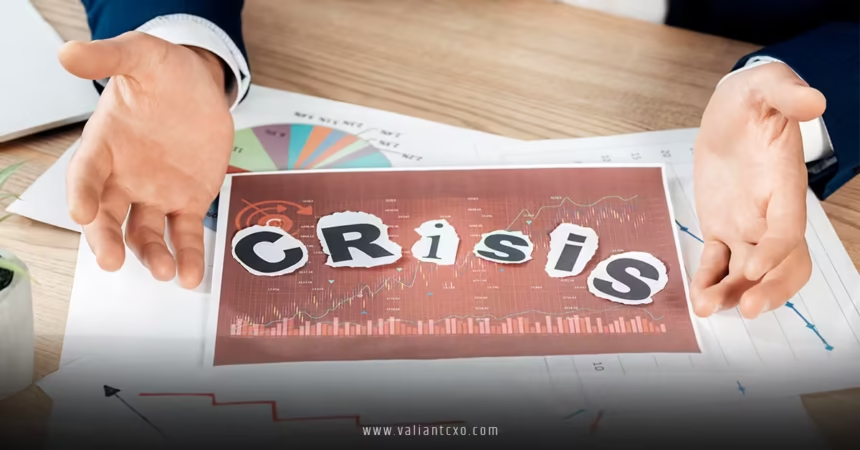Strategies for effective corporate crisis management can make or break a company when the unexpected hits. Imagine your business as a ship navigating stormy seas—without a solid plan, you’re at the mercy of the waves. Crises, whether financial, reputational, or operational, are inevitable in today’s fast-paced corporate world. But with the right strategies, you can steer through turbulence and come out stronger. This article dives deep into actionable, practical, and proven strategies for effective corporate crisis management, blending expertise with a conversational tone to guide you through preparing for, responding to, and recovering from crises.
Why Crisis Management Matters in the Corporate World
Ever wondered what separates thriving companies from those that crumble under pressure? It’s their ability to handle crises with composure and strategy. A crisis can strike without warning—a PR scandal, a supply chain breakdown, or a cybersecurity breach. Without strategies for effective corporate crisis management, even the most successful businesses can spiral into chaos. According to a 2023 PwC Global Crisis Survey, 69% of companies faced at least one major crisis in the past five years, yet only 35% felt fully prepared. That gap highlights the need for robust crisis management plans to protect reputation, finances, and stakeholder trust.
Crisis management isn’t just about damage control; it’s about turning challenges into opportunities. It’s like playing chess—you need to think several moves ahead to outsmart the opponent (in this case, the crisis). Let’s explore how to build a crisis-ready organization with strategies that work.
Building a Foundation for Crisis Preparedness
Developing a Crisis Management Plan
Strategies for effective corporate crisis management start with a solid plan. Think of it as a fire drill for your business—everyone needs to know their role before the alarm goes off. A crisis management plan outlines how your organization will respond to various scenarios, from natural disasters to data breaches. It should include:
- Identification of Potential Risks: Conduct a risk assessment to pinpoint vulnerabilities. Are you in a hurricane-prone area? Is your industry prone to cyberattacks? Knowing your risks is half the battle.
- Clear Roles and Responsibilities: Assign a crisis management team with defined roles. Who’s the spokesperson? Who handles internal communications? Clarity prevents chaos.
- Communication Protocols: Establish how you’ll communicate with employees, customers, and the media. Speed and transparency are critical to maintaining trust.
A well-crafted plan isn’t a dusty binder on a shelf—it’s a living document, regularly updated to reflect new risks and business changes. Companies like Johnson & Johnson set the gold standard during the 1982 Tylenol crisis by acting swiftly and transparently, proving that preparation pays off.
Training Your Team for Crisis Response
A plan is only as good as the people executing it. Training your team is a cornerstone of strategies for effective corporate crisis management. Regular simulations and role-playing exercises help employees internalize their roles. Imagine a pilot practicing in a flight simulator—you want your team to be just as prepared for real-world turbulence.
Training should cover:
- Scenario-Based Drills: Simulate crises like a product recall or a social media firestorm to test your team’s response.
- Media Training: Equip spokespeople to handle tough questions without stumbling. A single misstep can escalate a crisis.
- Cross-Functional Collaboration: Ensure departments like HR, IT, and legal work seamlessly together during a crisis.
Investing in training builds confidence and competence, turning your team into a well-oiled crisis-fighting machine.
Responding to a Crisis with Agility
Act Quickly but Thoughtfully
When a crisis hits, time is your enemy. Strategies for effective corporate crisis management emphasize speed without sacrificing thoughtfulness. Delaying a response can make your company look guilty or incompetent. Take the 2010 BP oil spill—BP’s slow and defensive response fueled public outrage, costing them billions in reputation and revenue.
Here’s how to act swiftly:
- Acknowledge the Issue: Don’t hide. A quick statement acknowledging the crisis shows you’re in control.
- Gather Facts: Avoid knee-jerk reactions by collecting accurate information. What happened? Who’s affected? What’s the scope?
- Communicate Early: Even if you don’t have all the answers, a holding statement like, “We’re investigating and will update you soon,” buys time and builds trust.
Speed doesn’t mean recklessness. It’s like defusing a bomb—move fast, but every cut needs to be precise.
Transparent and Authentic Communication
Transparency is the heart of strategies for effective corporate crisis management. Customers and stakeholders can smell inauthenticity from a mile away. During a crisis, own up to mistakes and share what you’re doing to fix them. Remember United Airlines’ 2017 passenger removal incident? Their initial defensive response inflamed the situation, while a sincere apology could’ve softened the blow.
Tips for transparent communication:
- Use Plain Language: Avoid jargon. Speak like a human, not a corporate robot.
- Address Stakeholders Directly: Tailor messages to employees, customers, and investors. Each group has unique concerns.
- Leverage Multiple Channels: Use social media, press releases, and internal memos to ensure your message reaches everyone.
Authenticity builds trust, turning a potential PR disaster into a chance to show your company’s values in action.
Mitigating Damage and Protecting Reputation
Managing Public Perception
Your brand’s reputation is like a fragile vase—once cracked, it’s hard to restore. Strategies for effective corporate crisis management prioritize protecting your public image. Social media amplifies crises, so monitoring platforms like X is crucial. A single viral post can escalate a minor issue into a full-blown scandal.
Here’s how to manage perception:
- Monitor Online Sentiment: Use tools like Hootsuite or Brandwatch to track what people are saying about your company.
- Engage Proactively: Respond to customer complaints on social media with empathy and solutions.
- Show Accountability: If your company messed up, admit it and outline corrective steps. People respect honesty.
For example, when KFC faced a chicken shortage in the UK in 2018, their humorous “FCK, we’re sorry” campaign turned a logistical nightmare into a PR win. Creativity and accountability can salvage even the worst situations.
Legal and Financial Considerations
Crises often come with legal and financial risks. Strategies for effective corporate crisis management include working closely with legal and finance teams to minimize liability. For instance, a data breach could lead to lawsuits, while a product defect might trigger costly recalls.
Key steps:
- Consult Legal Experts: Ensure your response complies with regulations and doesn’t expose you to lawsuits.
- Assess Financial Impact: Calculate potential losses and allocate resources to mitigate them.
- Insurance Review: Check if your insurance covers crisis-related costs, like business interruption or liability claims.
Partnering with experts ensures you’re not blindsided by hidden costs or legal traps.
Recovering and Learning from a Crisis
Post-Crisis Analysis and Debrief
Once the storm passes, it’s time to rebuild. Strategies for effective corporate crisis management don’t end when the crisis does—they include learning from the experience. Conduct a thorough post-crisis analysis to understand what went right and what didn’t.
Ask yourself:
- Did our plan work as intended?
- Were there gaps in communication or execution?
- How can we improve for next time?
A debrief isn’t about pointing fingers; it’s about growth. Companies like Toyota used lessons from their 2009 recall crisis to overhaul quality control, emerging stronger than ever.
Rebuilding Stakeholder Trust
Restoring trust is a marathon, not a sprint. Strategies for effective corporate crisis management focus on long-term relationship-building. Reach out to customers, employees, and investors with updates on how you’ve addressed the crisis. For example, after a data breach, offer free credit monitoring to affected customers—it shows you care about their well-being.
Other trust-building tactics:
- Share Improvements: Publicize changes you’ve made to prevent future crises.
- Engage with Stakeholders: Host town halls or Q&A sessions to address concerns.
- Stay Consistent: Deliver on promises to prove your commitment.
Trust is hard-won but easily lost, so stay proactive in nurturing it.
Leveraging Technology in Crisis Management
Using Data and Analytics
In today’s digital age, technology is a game-changer for strategies for effective corporate crisis management. Data analytics can predict potential crises by identifying patterns—like a spike in customer complaints or unusual network activity. Tools like Tableau or Google Analytics provide real-time insights to catch issues early.
How to use tech:
- Predictive Analytics: Spot risks before they escalate.
- Crisis Dashboards: Create a centralized hub for tracking crisis metrics.
- AI-Powered Monitoring: Use AI to scan social media for red flags.
Technology isn’t a replacement for human judgment, but it’s like a trusty co-pilot, helping you navigate turbulent skies.
Crisis Management Software
Dedicated software streamlines crisis response. Platforms like Everbridge or Crisis360 centralize communication, track tasks, and store critical documents. They’re like a command center for your crisis team, ensuring everyone’s on the same page.
Benefits include:
- Real-Time Updates: Keep everyone informed with instant notifications.
- Task Management: Assign and track action items during a crisis.
- Documentation: Store all crisis-related data for post-event analysis.
Investing in the right tools can make your strategies for effective corporate crisis management more efficient and impactful.
Conclusion
Strategies for effective corporate crisis management are your lifeline when chaos strikes. From building a robust plan and training your team to responding with agility and transparency, these strategies empower you to weather any storm. By prioritizing preparation, communication, and recovery, you can protect your reputation, finances, and stakeholder trust. Crises are inevitable, but with the right approach, they can become opportunities to showcase your resilience and values. So, are you ready to take charge and turn challenges into triumphs? Start implementing these strategies today, and your business will be stronger for it.
FAQs
1. What are the key components of strategies for effective corporate crisis management?
Strategies for effective corporate crisis management include a detailed crisis plan, team training, transparent communication, and post-crisis analysis. These elements ensure preparedness, quick response, and long-term recovery.
2. How often should a company update its crisis management plan?
A crisis management plan should be reviewed and updated at least annually or after major business changes. Regular updates keep strategies for effective corporate crisis management relevant and actionable.
3. Why is transparency important in crisis management?
Transparency builds trust with stakeholders. By being open about issues and solutions, companies using strategies for effective corporate crisis management can maintain credibility and mitigate reputational damage.
4. How can technology enhance crisis management efforts?
Technology, like analytics and crisis management software, improves strategies for effective corporate crisis management by predicting risks, streamlining communication, and tracking response efforts in real time.
5. What should companies do after a crisis is resolved?
Post-crisis, companies should analyze what happened, identify lessons learned, and rebuild trust through consistent communication and improvements, as part of strategies for effective corporate crisis management.
For More Updates !! : valiantcxo.com


